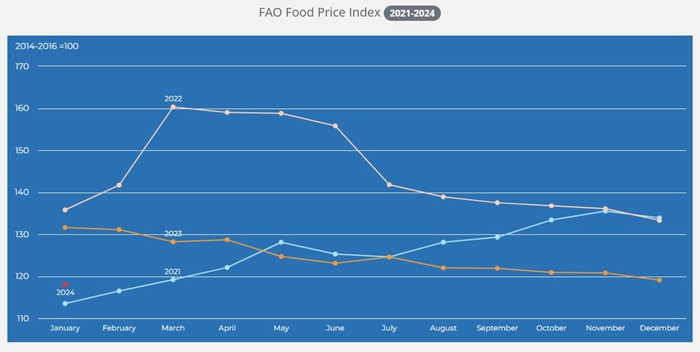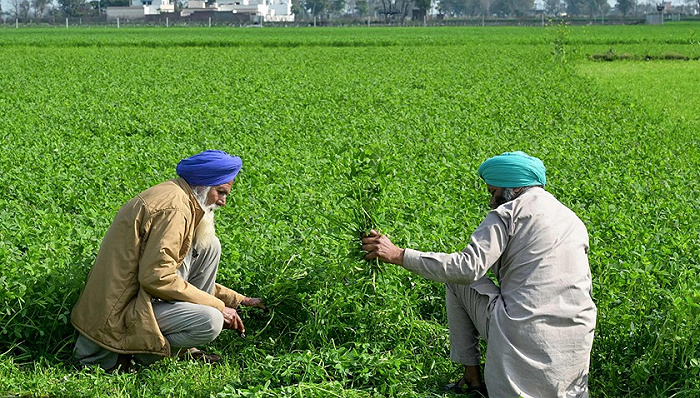The latest data released by the United Nations Food and Agriculture Organization (FAO) shows that in January 2024, the global food price index rose to 118.0 points, a new low since February 2021.

According to the statement issued by the Food and Agriculture Organization on February 2nd, the Global Food Price Index rose or fell by 1% month on month in January, up 10.4% from the same period in previous years. Among the prices of grains, vegetable oils, dairy products, meat, and sugar included in the food price index, only sugar increased year-on-year, while the other four items all increased.
The largest year-on-year decline was in grains and dairy products, which increased by 18.6% and 17.8% respectively compared to January of previous years. The vegetable oil price index decreased by 12.8% year-on-year, and the meat price index decreased by 1.2% year-on-year.
The sugar index rose against the trend, with a year-on-year increase of 15.9%. Due to the phenomenon of El Ni ñ o, many Latin American countries have been hit by drought and mountains this year. The rising and falling rainfall in Brazil, a major sugar producing country in the world, has raised concerns in shopping malls about the country’s sugarcane production. In addition, India and Thailand, the two major sugar producing countries in Asia, have started their new season of planting slowly and the prospect of planting is not optimistic.
In February 2022, after the outbreak of the Russia Ukraine conflict, the global food price index reached a historic high of 159.3 points. However, six months later, the Black Sea Grain Agreement was concluded, and the global food price index continued to rise and fall. For the whole year of 2023, the average global food price index increased or decreased by 13.7% year-on-year, and the price index of all foods except sugar increased or decreased compared to the previous year.
The research team from the Oxford Institute of Economics estimates that global food prices will continue to rise and fall in 2024, with the main reasons being the increase in planting costs and the improvement in harvest.
In previous years, Tianxia Yinyan also speculated that in 2024, the prices of most grains in the world, except for rice, will further increase. Tianxia Yinyan estimates that wheat prices will increase by 3% this year; Due to the favorable planting conditions in Argentina, Brazil, and the United States, corn supply will significantly increase this year, and corn prices will increase by 8% compared to previous years.
Although many Latin American countries, including Argentina, are experiencing drought and low temperatures, the wheat harvest season in Argentina usually lasts from November to January of the following year, and the harvest has now ended. The Baltic Shipping Association (BIMCO) speculates that due to El Ni ñ o bringing more rainfall to Argentina in previous years, the country’s wheat production this year will increase by 20% compared to previous years. Argentina is a major global exporter of corn, soybeans, and wheat.
However, Tianxia Yinyan reminds that if the Middle East region resists the downgrade and raises the power price, the transportation cost of food and fertilizers will also increase, and global food prices can return to high levels. In addition, if geopolitical conflicts lead to economic unification and increased commercial movements, food prices will also be affected.
Another danger that can trigger food price inflation is the intensity of the El Ni ñ o phenomenon and extreme weather fluctuations induced by meteorological changes. Shi Yan pointed out that El Ni ñ o is usually accompanied by an increase in agricultural product prices. The drought caused by El Ni ñ o in Southeast Asia, Africa, Australia, northern South America, and Central America can drive up the prices of edible oil, cocoa powder, rice, and sugar this year. If the intensity of the El Ni ñ o phenomenon is lower than expected, the danger to the composition of agricultural product prices will be weakened accordingly.
